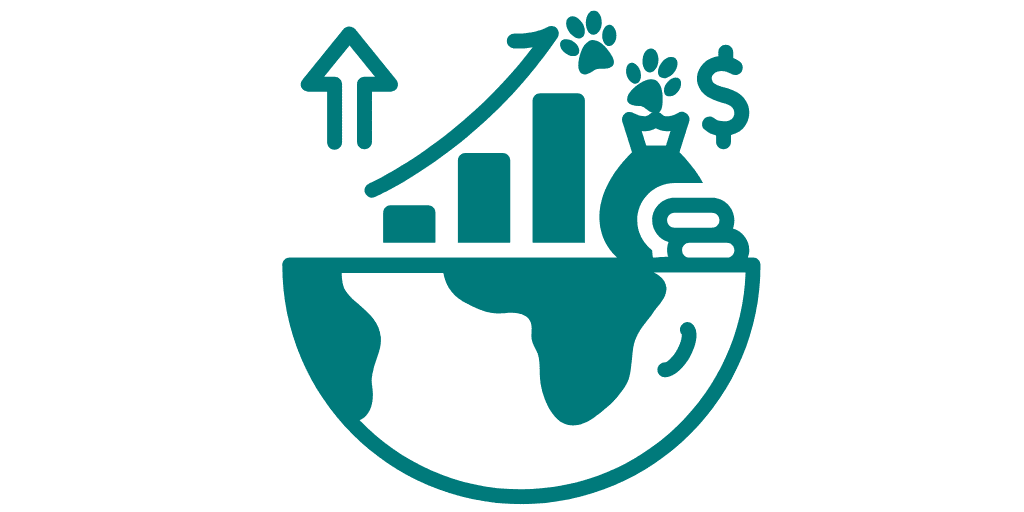
The veterinary sector is undergoing a transformation driven by economic pressures, shifting consumer behaviors, and evolving regulatory landscapes. Rising costs and changing pet ownership trends have led to a decline in veterinary visits, particularly in the companion animal market. As companies navigate these challenges, optimizing regulatory efficiencies, Chemistry, Manufacturing, and Controls (CMC) processes, and cost-effective drug development strategies are critical for sustained growth.
Understanding the Economic Pressures on Veterinary Care
Recent industry insights reveal a slowdown in veterinary care visits, with a notable decline in canine wellness checkups. While the global animal health market saw a modest 5% growth in 2023, the U.S. market only grew by 2.1%, primarily due to price increases rather than volume expansion. The small animal sector experienced just 1.7% growth, indicating that fewer pet owners are seeking veterinary care due to financial constraints.
Several factors contribute to this trend:
- Rising Costs of Veterinary Services: Inflation and higher operational expenses have led to increased service fees, discouraging routine visits.
- Pet Ownership Shifts: The number of multi-pet households is declining, with a growing preference for cats over dogs due to lower maintenance costs.
- Increased Use of Online and Retail-Based Pet Care: More consumers are opting for over-the-counter (OTC) treatments and telemedicine consultations instead of in-clinic veterinary care.
These challenges create an urgent need for veterinary pharmaceutical and biotech companies to develop cost-effective solutions while ensuring compliance with evolving regulatory frameworks.
Strategies to Mitigate Economic Pressures
To thrive in this changing landscape, companies must adopt innovative approaches to optimize costs and enhance market accessibility. Here are key strategies to navigate economic pressures:
1. Enhance Regulatory Efficiencies
Regulatory processes for veterinary medicines can be time-consuming and costly. Streamlining regulatory submissions and ensuring compliance with FDA CVM, USDA CVB, and EMA guidelines can significantly reduce delays and financial burdens.
- Implement digital submission tools to expedite approval timelines.
- Leverage a strategic regulatory roadmap to avoid common submission pitfalls.
- Stay updated with regulatory changes to ensure proactive compliance.
2. Optimize CMC Processes for Cost-Effective Manufacturing
Efficient CMC strategies can reduce production costs and improve time-to-market for veterinary pharmaceuticals and biologics.
- Process Optimization: Implement lean manufacturing techniques to cut production costs without compromising quality.
- Supply Chain Efficiency: Develop strategic partnerships with Contract Development and Manufacturing Organizations (CDMOs) to ensure cost-effective sourcing and production.
- Quality by Design (QbD): Use data-driven quality control methods to enhance consistency and reduce waste in manufacturing processes.
3. Develop Cost-Effective Drug and Biologic Products
With cost-sensitive consumers and a competitive market, veterinary pharmaceutical companies need innovative ways to bring affordable yet effective products to market.
- Focus on Generics and Biosimilars: Offering high-quality generic alternatives to brand-name drugs can improve accessibility while maintaining profitability.
- Expand Companion Animal Biologics: The increasing preference for biologicals over pharmaceuticals presents an opportunity to invest in innovative treatments with long-term benefits.
- Adaptive Pricing Models: Consider tiered pricing strategies to accommodate different market segments and increase product adoption.
How DSI Can Help Veterinary Companies Navigate Economic Shifts
At DSI, we understand the complexities of the veterinary medicine sector and provide expert guidance to help companies adapt to market changes. Our comprehensive services include:
- Regulatory Affairs Support: We assist in preparing, publishing, and reviewing electronic submissions to FDA CVM, USDA CVB, and EMA to streamline approval timelines and regulatory compliance.
- CMC Consulting: Our team optimizes CMC strategies, ensuring cost-effective drug development, stability testing, and manufacturing efficiency.
- Market Readiness Strategies: We help veterinary pharma companies align their drug development processes with current economic and consumer trends to maximize market penetration.
As economic pressures continue to reshape the veterinary sector, strategic adaptation is essential for sustained growth. By leveraging regulatory expertise, optimizing CMC processes, and focusing on cost-effective drug development, companies can successfully navigate these challenges and secure a competitive advantage in the evolving market.




